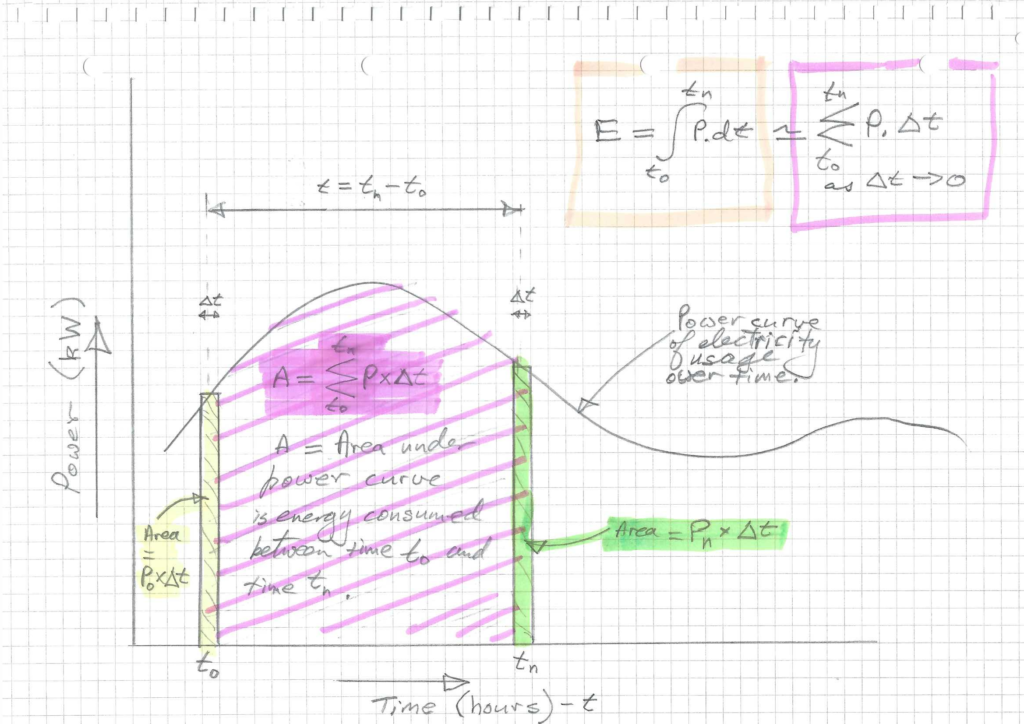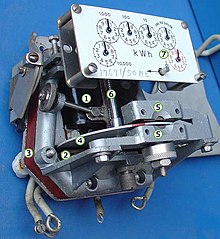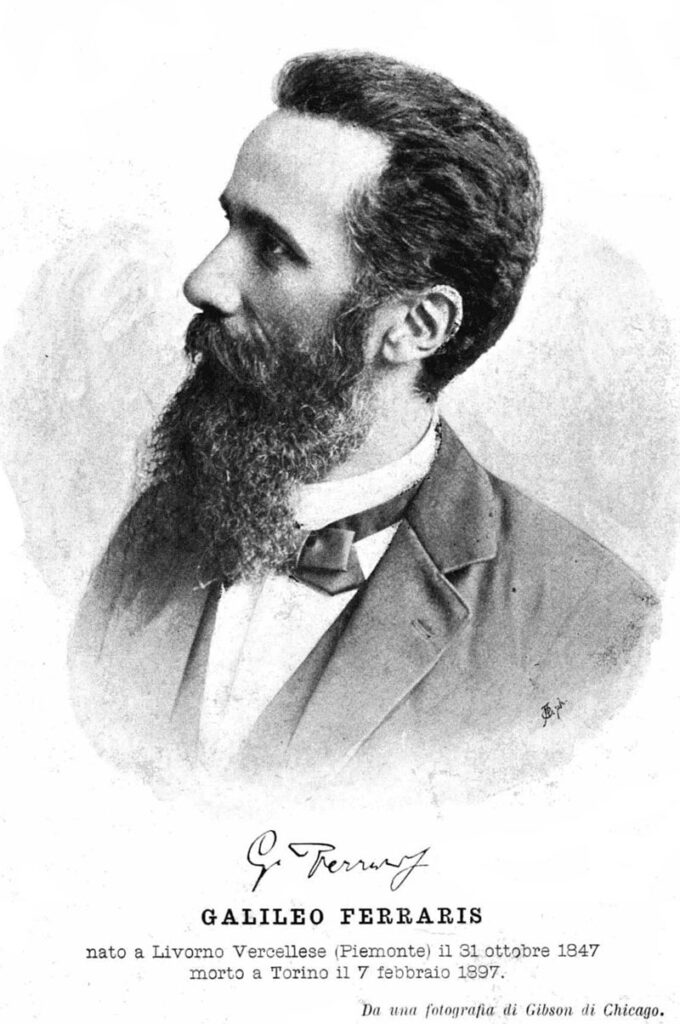
What’s with kW and kWh? We see from time to time confusion in the media, traditional and internet, concerning the application of the measurement units: ‘kW’ and ‘kWh’.
[This Post updated on 6/08/2023].
So what IS with kW and kWh?
Power
If you are familiar with the SI units of measurement you will know that the kilowatt (kW) is used for measurement of power. This is the SI Unit equivalent of the Imperial system‘s horsepower (HP).
Of course the basic unit of power in the SI system is the watt (W), and 1 kW = 1000 W.
An equivalent unit to the watt in the Imperial and US customary System is the horsepower:
- 1 horsepower (HP) = 746 watts (W)
[For the US SI units system, refer to the National Institute of Standards and Technology (NIST) site here].
The SI units definition of power is as follows:
energy flow rate, heat flow rate, power; watt; W; 1 W = 1 J / 1 s; The watt is the power which in 1 second gives rise to energy of 1 joule.
Energy
In the SI system, the joule (J) is used for the measurement of energy. The Imperial measurement system has several equivalents to the joule, depending upon the application. These include: foot-pound, the horsepower-hour, and the British Thermal Unit (BTU), amongst others.
For example, the above referenced Imperial measurement system of energy units are equivalent to the joule (J) as follows:
- 1 foot-pound = 1.35582 joules (J),
- 1 horsepower-hour = 2.6845 megajoules (MJ ),
- 1 British Thermal Unit (BTU) = 1055.06 joules (J).
Please note that the above equivalents between the SI and Imperial systems are not exact but close approximations. The equivalences of units within the SI system tend to be exact, hence one of the reasons for the SI system. Another advantage of the SI system is its avoidance of conversion factors which are often required within the Imperial System.
The SI units definition of energy is as follows:
work, energy, quantity of heat; joule; J; 1 J = 1 N . 1 m; The joule is the work done when the point of application of 1 newton moves a distance of 1 metre in the direction of the force.
But what about the kWh?
Well, the kWh is classified as ‘other‘ within the SI unit system. It is used by the electricity distribution industry for reasons of history and convenience.
Consider your power account invoice. It makes no mention of joules (J) of energy used. Instead it discusses your power usage in terms of kWh or ‘units’ of electrical energy.
So what is a kWh?
1 ‘unit’ = kilowatt-hour (kWh) = 1000 x 60 x 60 watt-seconds (W-s) = 3,600,000 joules (J) = 3.6 megajoules (MJ).
But your appliances’ power ratings are generally in watts (W) (e.g. for lighting) and kilowatts (kW) (e.g. for heating). Also, the electricity companies have been metering customer’s power usage with Ferraris type electro-mechanical meters that have been measuring energy in kWh since the late 1800’s.
The SI units definition of Wh is as follows:
watt hour; W.h; – and the multiples of the watt hour formed according to the SI units’ decimal multiples.
1 W.h = 3,6 kJ = 3.6 x 103 J
Ferraris electricity energy meter
Ferraris electricity energy meters are designed with mechanical registers that record the electrical energy usage in ‘units’, and decimal fractions, of kilowatt-hours (kWh).
So, for convenience, and to reduce confusion for the customers, the electricity companies have used, and continue to use, the kWh, and not the MJ, for recording and billing electrical energy usage.
Galileo Ferraris
The Ferraris type electricity meter is named after Galileo Ferraris who was a pioneer researcher in the field of electrical engineering. Wikipedia has very informative entries for both Galileo Ferraris and the Ferraris meter that was named after him.
Ferraris meter is a single purpose calculator
The ferraris meter is an electro-mechanical single purpose calculator for integrating, or summing, small packets of energy over time to do a running calculation of the total energy consumed by the circuit being metered.
Why the confusion between kW and kWh?
We have seen over the last few decades an explosion of news items and articles in the traditional and internet media on the subjects of Photo Voltaics (PV) (i.e. solar cell electricity generation), Electric Vehicles (EV), and batteries (particularly Li-ion batteries for vehicles and battery banks for electricity energy storage). Not all of the writers and speakers on these subjects seem familiar with the difference between the kW (power) and kWh (energy) units. Let’s consider three categories of electrical equipment that may be rated for power and energy:
- electrical generators (e.g. PV, wind turbines, hydro turbines, etc.),
- electrical storage batteries (e.g. Li-ion vehicle batteries, stationary storage batteries, etc.), and
- electrical loads (such as lighting, heating, motors and other devices that transform electrical energy into other forms of energy when they operate).
But first let’s consider how the Ferraris meter calculates the energy being metered:
Power curve
The power curve in the image below is a pencil sketch of hypothetical electricity power usage through a Ferraris meter. The graph of the power curve illustrates how the meter calculates the energy usage in kWh from the instantaneous power and the elapsed time.

The meter does its calculation by first causing its disc to spin by the action of the voltage and current coils.
The magnetic fields generated by the two coils interact with the aluminum disc to produce circulating currents that create an electromotive force to turn the disc. This in effect ‘multiplies’ the measurement of the voltage of the circuit being metered by the measurement of the current of the circuit being metered.
Thus the meter ‘calculates’ the power flowing through the meter to the loads in the circuit. The rate of spin of the disc is proportional to the quantity of power being measured. That is, the rate of spin is proportional to the kilowatts (kW) being drawn by the loads connected in the circuit being metered. The more power being drawn, the faster the disc spins. The revolutions of the disc are counted by the mechanically geared clock dials that are connected to the spinning disc by a cog and gear train. The faster the gears turn over the course of an hour, the more counts will be registered on the meters clock dials. Per hour the measurement is in kilowatt-hours (kWh) and the meter is calibrated to register this on its dials.
The counter accumulates the measurements of the energy in kilowatt-hours (kWh) that has passed through the meter since it was installed when its register was set at zero. The energy to be billed for the period is calculated by comparing the previous reading with the latest reading and taking the difference.
When the meter reader reads the meter every month, she records the accumulated kWh count on the meter dials, and the date and time of the reading. The energy company’s accounts department duly inputs the meter reading along with the time of the reading into their computer. The software computes the difference in the kWh readings between the times of the current reading and the previous reading, and the company bills the customer for the difference.
We will now return to the question of ratings of equipment:
Electrical generators
Electrical generators have a number of ratings, including (but not limited to) voltage (V), current (I), and maximum output power (kW). The amount of energy in kWh supplied by a generator depends upon the demand for its energy by the network load that the generator is feeding its energy into. The power demand usually varies according the need of the load. However, the power demand in kW at any instant able to be supplied by the generator to the load will be limited by the generator’s maximum power rating in kW.
Electrical storage batteries
Electrical storage batteries also have a number of ratings. These include voltage (V), current (I), and maximum energy (J) storage capacity. The energy storage capacity rating is often given in ampere-hours, rather than joules. This is an historical and convenience thing. Because batteries are direct current (DC) devices and not alternating current (AC) devices, it is not possible to use a Ferraris type meter to measure the energy usage. Thus the measurement of steady energy usage would be achieved using an ammeter and timer.
For more accurate and continuous measurement, and allowing for variations in energy usage, a more accurate system of metering is required.
Measuring dc power flow from a battery
One solution is to measure the variation in voltage across a very low valued (but accurately calibrated) electrical resistor, called a shunt. This shunt resistor is connected in series in one of the output circuit conductors from the battery to its load. The current in ampere or amp (A) drawn from the battery by the load must pass through this resistor.
The voltage across the length of the shunt resistor is measured and Ohms Law applied. The variation in volts (V) is proportional to the current variation. The volts, V, (volt, V) equals the product of the current, I, (ampere or amp, A) and the resistance of the shunt resistor, Rs, (ohm, Ω): ( V = I x Rs ). Thus the current in the circuit, I = V / Rs ampere (A).
The power (P) in watts (W) flowing through the shunt resistor (Rs) in ohm (Ω) and into the circuit is calculated by multiplying (x) the voltage (V) in volts (V) by the current (I) in ampere (A):
P = V x I watts (W).
(Note that the shunt resistance (Rs) in Ω should not be confused with the resistance of the load, Rload Ω, in this battery dc circuit, It is the load resistance that is drawing the current when the voltage is applied to the circuit.
If the battery is feeding an inverter, the load is the input resistance of the inverter. An inverter is an electronic power device used to convert dc power into ac power for use in conventional ac circuits.)
Measuring dc energy supplied by a battery
Multiplying the instantaneous power, P, in watt (W) by the time, delta t, ∂t, in second (s), gives the circuit’s energy usage, E, in joule (J), during time delta t, ∂t, in joule (J). The energy usage over time, t, in second (s) is the summation of all the delta t, ∂t, energy usages over time t. This is done electronically by integrating (or summing) the changing instantaneous power, P, (W) times the very small time interval, delta t, ∂t (s), and accumulating the result as the sum of all the energy, E, from t0 to tn. Thus, we have:
∑ [ P x ∂t ]t0tn (W-s = J).
Integrating P over time for duration t to derive E
In the limit that ∂t goes to zero, summing all the products of P and ∂t between t=0 and t=t becomes the integral, from t=0 t0 t=t,
E = ∫ P(t) dt.
Calculus – integral
For more information on calculus and integration (integrals), please refer to the Wikipedia article referenced below:

Because this calculation and the data storage of it is done within an electronic digital device, it is easy to translate the joules into kWh, if required.
Electrical loads
Electrical loads also have ratings according to the type and application of the load. In addition one metered circuit may have more than one load device connected which can complicate the engineering of the circuit and the metering. We will not go into these matters here. However the electrical network companies usually classify customer’s metered circuits into different types according to the mix of, and types of, loads connected to the circuit. The energy retailer will require metering equipment to be fitted that is compatible with the type of circuit.

